This past September I went to Tokyo for a Tokyo Metro project. This is my Tokyo guide for all of you who love Tokyo as much as I do. It will help you enjoy this megametropolis from an even more in-depth dimension, other than the neon, skyscrapers and famous eats that most of you are already familiar with.
I believe a lot of you who are reading this blog have made your maiden trip to Tokyo, and you have done all the classic and cliched – a walk down Takeshita in Harajuku, Sushi in Tsukiji, omikuji at Meiji Shrine, shopping in Shibuya… you don’t really need this blog for those. What this series of blog post will do, is to inspire more people to come back to Tokyo and take on an adventure off the beaten track. I will be sharing some of the rare cultural gems, affordable eats that are not in every other travel guide book and even delicious halal food.
And to do that, first you will need to get your Tokyo Subway Ticket, namely the tourist pass available at a special discount, because that’s literally your ticket to enjoying Tokyo the best and most cost-effective way.
Tokyo Subway Ticket (24-hour, 48-hour, 72-hour)
What are the benefits of these tickets?
1. I’m sure as a tourist, you will ride the train multiple times a day. Here are some tips for cost effectiveness and to help you pick the right tickets.
It’s recommended to buy a 24H ticket if you ride more than 5 times in 24 hours, 4 times per day for the 48H ticket, and 3 times per day for the 72H ticket.
2. It is also pretty time-consuming if you have to find the ticket machines to purchase the tickets every single time you ride the train, not to mention sometimes there might be a queue! With this ticket, you can easily hop on and off without purchasing the ticket every time.

You can proceed to any Tokyo Metro Information and Pass Office to purchase your ticket.

Nope. You don’t need to use the machines at all.

The always-friendly Tokyo Metro staff at the information counter will guide you through the different types of tickets.
There are 3 types to suit your travel needs:
Tokyo Subway 24-hour Ticket – Adult: 800 yen, Child: 400 yen
Tokyo Subway 48-hour Ticket – Adult: 1,200 yen, Child: 600 yen
Tokyo Subway 72-hour Ticket – Adult: 1,500 yen, Child: 750 yen
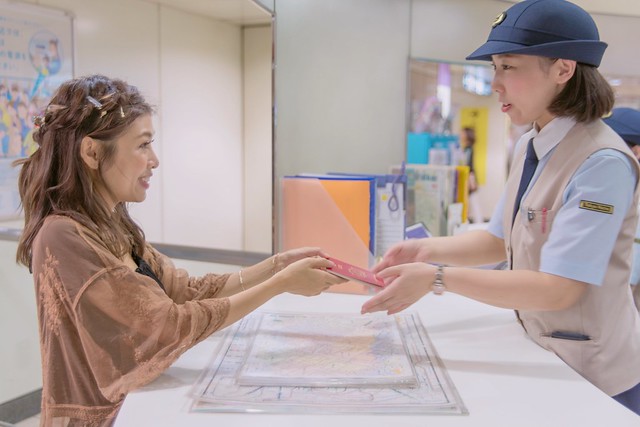
You will need to present your passport for a quick verification (since only tourists are eligible for this ticket!).

You will be filling in a form on the type of ticket you need.

Make payment, and that’s it!

Now let’s enjoy Tokyo, my favorite city in the whole wide world!!
Omote-sando Station (G02/C04/Z02)
I was at Omote-sando when I purchased the tickets. Omote-sando is probably also my favorite place in Tokyo, since I basically do most of my shopping, eating and beauty services there. I could hardly contain my excitement, because I just love this stylish district so, so much.

Familiar with this street?
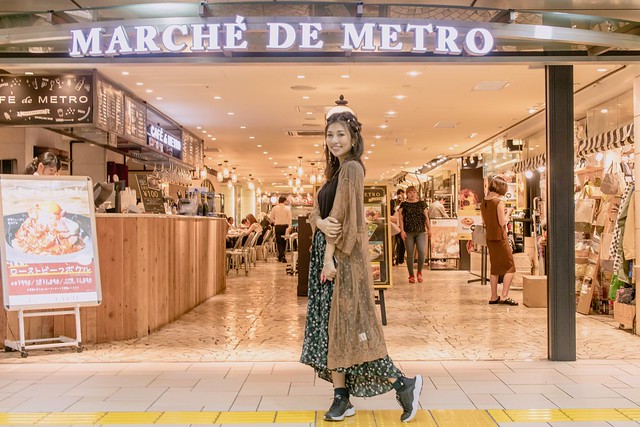
A chic food court for a quick bite underground.
Jimbocho Station (Z07/I10/S06)
(6 min walk from Jimbocho Station Exit A8)
GLITCH COFFEE

So our first stop today is a snazzy cafe tucked between the streets of Jimbocho.

With all seriousness in strictly focusing on not only roasting and brewing but also cultivation, purification and farming, hardcore coffee lovers will find this a nirvana that is worth coming all the way here for.

Glitch claims that they are the No.1 light roasting master in Japan with innovative roasting theory, and have devised their original roasting method called “Share Roaster” – sharing the knowledge and experience to move on to the next level together as a tribe. I am moved by the concept, as only true professionals with a fiery passion are able to do so.
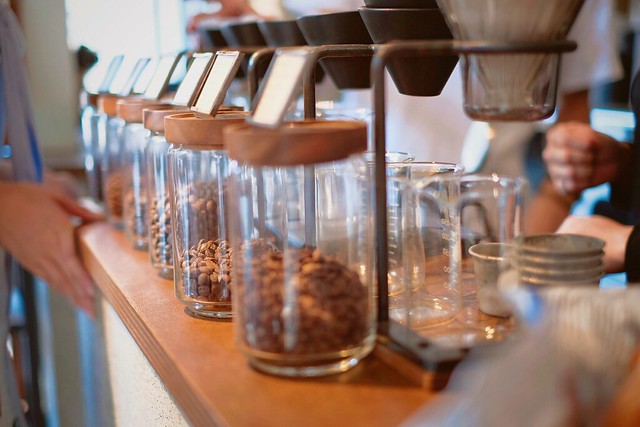
Indulge in their finest coffee beans carefully curated from around the world.

The scent of a luxurious time you will be treating yourself to.

Ethiopia Kayon Natural in my cup. It did not taste like anything I have savored before – fruity with a hint of citrus, complex yet sweet.

Having a chat with May the barista in my awkward Japanese, who turned out to be also speaking in her awkward Japanese and is actually a student from Singapore.
Google map route:
Tsukishima Station (E16/Y21)
(7 min walk from Tsukishima Station Exit 7)
MONJA NISHIKI 2
If you have been to Osaka before, you must have tried Okonomiyaki. Monjayaki is like the Tokyo cousin of Okonomiyaki, lesser-known, but equally oh-so-yummy. In fact I much prefer Monja!

There’s a Monja Street in Tsukishima, literally full of Monjayaki restaurants.

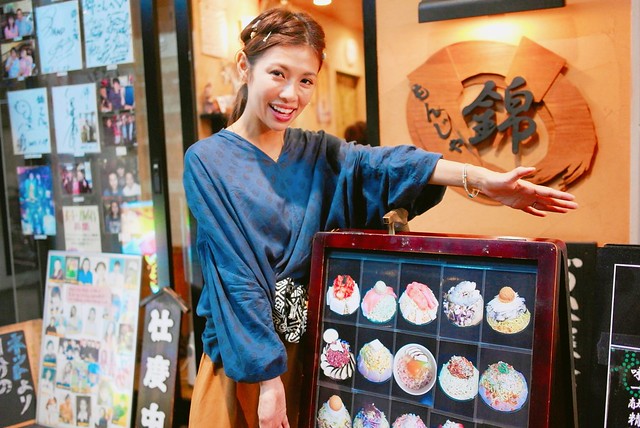
And each restaurant has their original menu to stand out from the tough competition. When I was there, almost every restaurant was packed!

You are going to have a hard time deciding which to order.

For me, it was simple – go for the bestseller, or go straight for the Mentaiko classic. So happened, they both were the same.
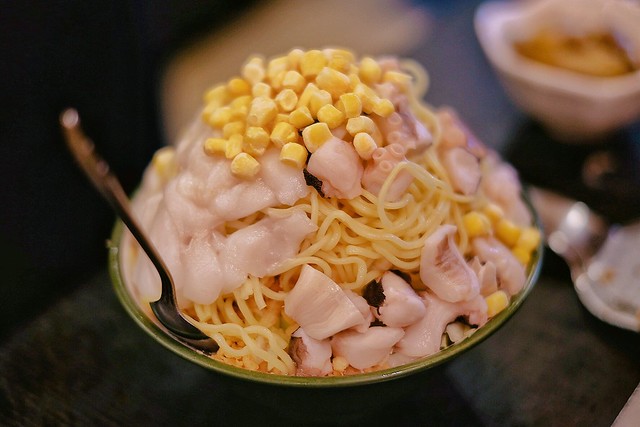
I was craving for seafood so I also ordered the seafood in salt dashi (I’m not really a fan of the sweet sauce).

You can let the shop staff do all the cooking and just enjoy eating it, or you may also participate in cooking and have fun!

That’s me making my seafood Monja!
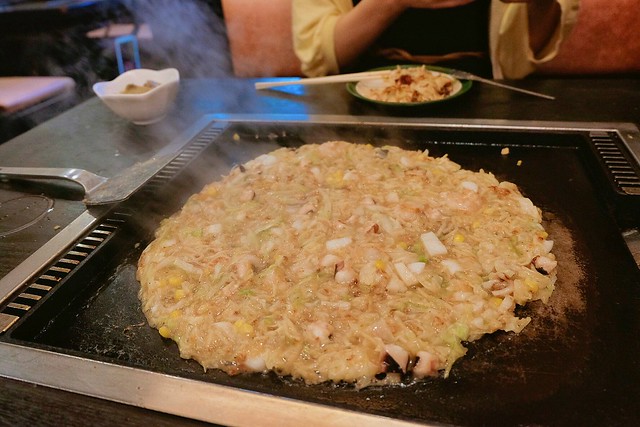
When it is cooked, you eat directly from the grill using a small spatula.

It’s also sizzling hot so beware, people who have got a cat’s tongue!
Google Map Route:
Kagurazaka Station (T05)
(3 min walk from Kagurazaka Station Exit 1)
KADO
I really looked forward to going to Kado, because it was not like any other restaurant I have been to in Tokyo.

You may feel like you are lost in the alley while making your way there, because it is indeed a very secluded dining spot disguised as just a regular traditional residence.

In fact, it was originally a private house build in the Showa era, converted into a very unique izakaya.

Upon entering the house/restaurant, you feel like you are no longer in Tokyo.

Culinary collections from the owner.

They are selling their super cute original T-shirts too.


Black board menu. This is the standing bar where you nibble on appetisers and sip on your favorite Japanese sake.


The unique feature about this restaurant is that other than the standing bar, the interior is zashiki-style, meaning that there’s no chair nor tables, so you will be sitting on the tatami with a 膳 (zen) – a traditional low dining table for the food to be served individually.

Dining in peace, facing the veranda looking over the sunset. It felt like I was living a scene from a 100 years ago.

I only had the appetiser lunch set (served with Japanese sake), which costs only 800 yen. The food was great, but the atmosphere was more surreal. I would really love to come back here for dinner.
Google Map Route:
And that’s all for today. I will be sharing some halal gourmet that I have tried in Tokyo in my next post specially for Muslim travelers! Stay tuned.
For more info on Tokyo Metro, check out:


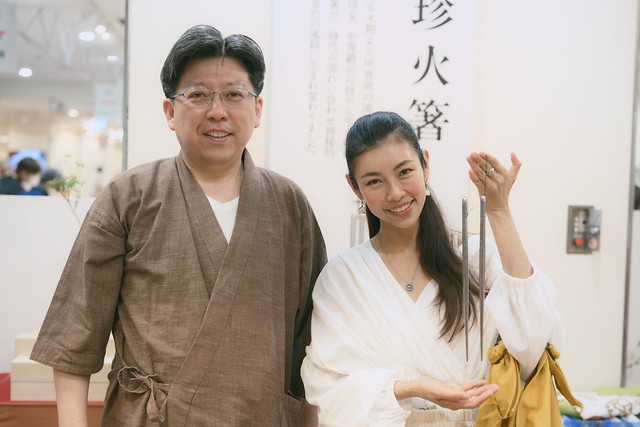












You and your adventures in Japan, Cheesie – always making me jealous!
–
Charmaine Ng | Architecture & Lifestyle Blog
http://charmainenyw.com
Hope you get to visit soon! 🙂
Ah I miss Tokyo! Got my flight booked for next spring though 🙂
Yay!! Is it sakura season? 😀
I am so looking forward to this series! I’m from Germany and I know it will be two or more years until I can make it to Japan – but already now I’m soaking in all your tipps and tricks! Thank you so much!
You are most welcome!!! I hope you can realize your dream ASAP! 😀
Dear Cheesie, may I check if the Monja restaurants are suitable for kids as well? Thanks!!
Yes it would be, except it’s a little smoky because of the hot plate, and also of course to guard little kids from the hot plate. So do take note 🙂
The photo of you sipping coffee is excellent, the background and hairdo blends perfectly well.
Thank you 🙂
wow thank you for the insightful info!
You are most welcome 🙂
Hi Cheesie, do you recommend to purchase metro pass when i already have JR pass?
I would think so! Metro covers most of Tokyo so you will definitely be using the underground. 🙂 If you travel a lot with public transport it would be worth it 🙂